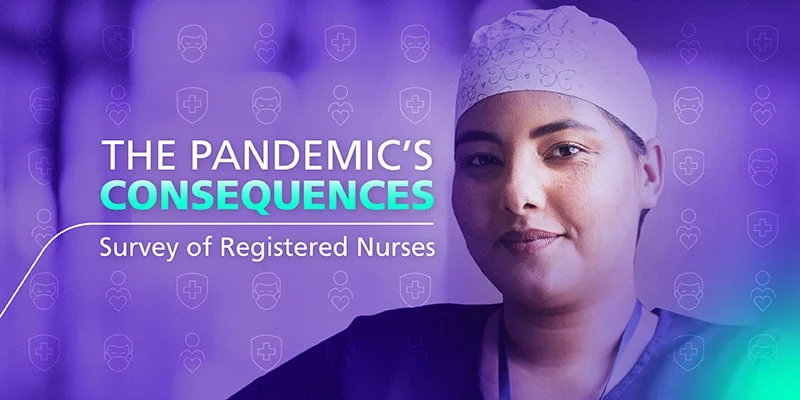
Labor and Delivery Nursing: Answers to 8 Frequently Asked Questions (FAQs)
What does a labor and delivery nurse do? Everything that it takes to care for a new mother and her baby--before, during and after childbirth.
Labor and delivery nursing, or L&D nursing, is a very rewarding career—one that lets you use all of your skills to help families during a very profound life experience. If you’re interested in working as a labor and delivery nurse, check out some key facts about this specialty from answers to eight of the most frequently asked questions (FAQs).
Answers to 8 FAQs about labor and delivery nursing
1. What are the educational requirements to become a labor and delivery nurse?
First, you need to graduate from an accredited nursing school. Then you need to take a nurse licensure exam, which is known as the NCLEX-RN. Once you pass the NCLEX, you are officially a registered nurse. Many employers will also require that you pass the Basic Life Support (BLS) and the Advanced Cardiovascular Life Support (ACLS) certification exams, both of which are offered through the American Heart Association. You might also need to get certified in neonatal resuscitation (NRP).
While some licensed practical nurses/vocational nurses (LPNs/LVNs) may be able to work in L&D post-partum, hospitals primarily hire registered nurses in this specialty.
2. Where do labor and delivery nurses work?
Typically, L&D nurses work in birthing centers and hospitals of all sizes that have labor and delivery units.
3. What are the typical job responsibilities of a labor and delivery nurse?
L&D nurses have many responsibilities, including monitoring the patient throughout all four stages of labor. Some of the key tasks that labor and delivery nurses do include:
- Monitoring vital signs for the mother
- Monitoring the baby’s heartbeat
- Measuring contractions
- Starting IV lines when necessary
- Helping with the induction of labor
- Administering pain medications, or assisting the anesthesia provider
- Checking the patient’s cervix for progress
- Providing emotional and psychological support to the laboring mother
- Alerting the physician or midwife when their services are needed
- Helping the mother during labor and the actual delivery
- Caring for the newborn immediately after birth
- Educating the new mother
- Keeping records of the entire process
Depending on the size of the labor and delivery unit, some of these responsibilities may be divided among different nurses during a shift. Some L&D nurses may subspecialize in post-partum care, assisting with high-risk pregnancies, or in another area of labor and delivery nursing.
4. Can I get certified for L&D nursing?
Definitely. You will need to accrue about two years of on-the-job experience first, though. Then you can pursue the Inpatient Obstetric Nursing (RNC-OB) credential, which is offered through the National Certification Commission (NCC). This certification is a strong indication to employers of your dedication and skill level as a labor and delivery nurse. The NCC also offers other certification opportunities that may be of interest, including the Electronic Fetal Monitoring (EFM) certification.

5. What other skills do I need in labor and delivery?
Your formal nursing education and hands-on experience are absolutely necessary to help you be prepared to be a labor and delivery nurse. But there are some other “softer” skills that will also help you be successful:
- Good communication skills. Throughout the birthing process, you’re watching out for complications and working to guide the mother through each stage of labor. So, it’s vital to listen well and be able to convey information effectively and efficiently to your patient, her labor coach, the patient’s physician and others on the medical team.
- Another useful quality to nurture is compassion. Laboring mothers are in a very vulnerable position. They may be anxious or scared, and they may be in pain. In addition to being their advocate, you are an important source of comfort to them, too.
- Ability to multitask. As a labor and delivery nurse, you really have two patients you’re watching out for in each case, and you may be assigned to more than one mother on a shift. Your ability to multitask and prioritize is essential to providing optimal care.
- Desire to keep learning. Nursing practice–and healthcare in general–continues to evolve. To keep current in L&D nursing, you’ll need to embrace all the opportunities you have to learn more, whether that is a continuing education module, a workshop at your hospital, or a conference that you attend. The more you learn, the better you’ll be able to care for your patients with the most updated, evidence-based information.
6. What kind of a salary can I earn as an L&D nurse?
Your paycheck will vary, depending on your experience level, the size and type of institution where you’re working, and the location, among other factors. L&D nurses can expect to earn anywhere from about $67,000 per year to about $84,000, according to Salary.com. As of late February 2021, the median salary for labor and delivery nurses in the United States was $74,300. Once you’ve built up a solid amount of experience and added some certifications to your resume, you might be able to make even more.
Labor and delivery travel nurse salaries also tend to be higher, with nurses often earning between $1,900 and $2,400 per week with American Mobile assignments.
7. What kind of shifts do L&D nurses work?
Shift schedules can vary from hospital to hospital, but most L&D nurses work 12-hour shifts, according to Chamberlain University. However, nurses may find shifts ranging anywhere from 8 to 12 hours.
8. Should L&D nurses join a professional association?
Joining a professional association can bring you some great opportunities for continuing education and networking. The professional association that focuses on issues relevant to labor and delivery nurses is the Association of Women’s Health, Obstetric, and Neonatal Nurses, or AWHONN. You can also join the American Nurses Association or your state chapter of the ANA.
Looking for new opportunities? AMN Healthcare has hundreds of rewarding L&D travel nurse assignments across the U.S.
Additional Nursing Resources:
- AMN Passport: Our all-in-one nursing app for booking nursing jobs.
- Nursing Salary & Benefits: AMN Healthcare offers our nurses some amazing salaries and benefits. Find out what's in store for your nursing career today.
- Travel Nurse Licensing: Find out about nursing requirements for all 50 states.
- Exclusive Facilities: AMN Healthcare has relationships with the most sought-after healthcare providers.
- Refer-a-Friend: Make up to $2,000 per referral.
Latest News
International Recruitment Webinar
Healthcare employers across the U.S. are navigating unprecedented staffing challenges. This exclusive webinar will provide actionable insights into how international clinicians can enhance your
Discover the Vital Role of International Nurses in the U.S.
This white paper is a comprehensive resource to understand the indispensable contribution of international nurses to the U.S. healthcare system.
2024 Nurse Pulse Survey
Explore the full findings of the 2024 Nurse Pulse Survey and gain exclusive access to detailed insights that can guide your strategies and initiatives.
The Ultimate Guide to Strike Contingency Planning
Our “Ultimate Guide to Strike Contingency Planning” equips healthcare leaders with insights, strategies, and tools to ensure continuity of care during labor strikes.
Celebrating Excellence in International Nurse Recruitment:
Sinead Carbery, one of two individuals winning the prestigious 2024 CGFNS DAISY Award.
2024 Survey of Hospital Nurse Leaders
This new survey of hospital Chief Nursing Officers, Chief Nursing Executives and other nurse leaders examines the roles, challenges, and workforce solutions.
Keys to Selecting the Right Partner to Solve Unexpected Staffing Demands
Staffing challenges in healthcare are often unavoidable, but having a plan in place and resources ready can make all the difference for organizations, caregivers, and communities.
2023 AMN Healthcare Survey of Registered Nurses
The AMN Healthcare 2023 Survey of Registered Nurses examines the serious challenges now facing nurses related to career satisfaction and mental health and wellbeing as a result of the pandemic.











